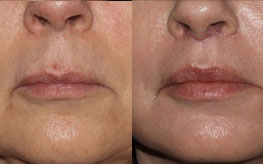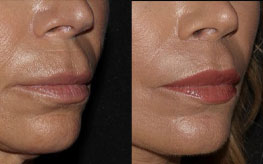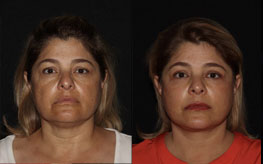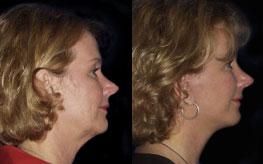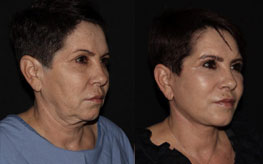Rhinoplasty For Men
Conveniently located to serve the areas of San Diego, CA
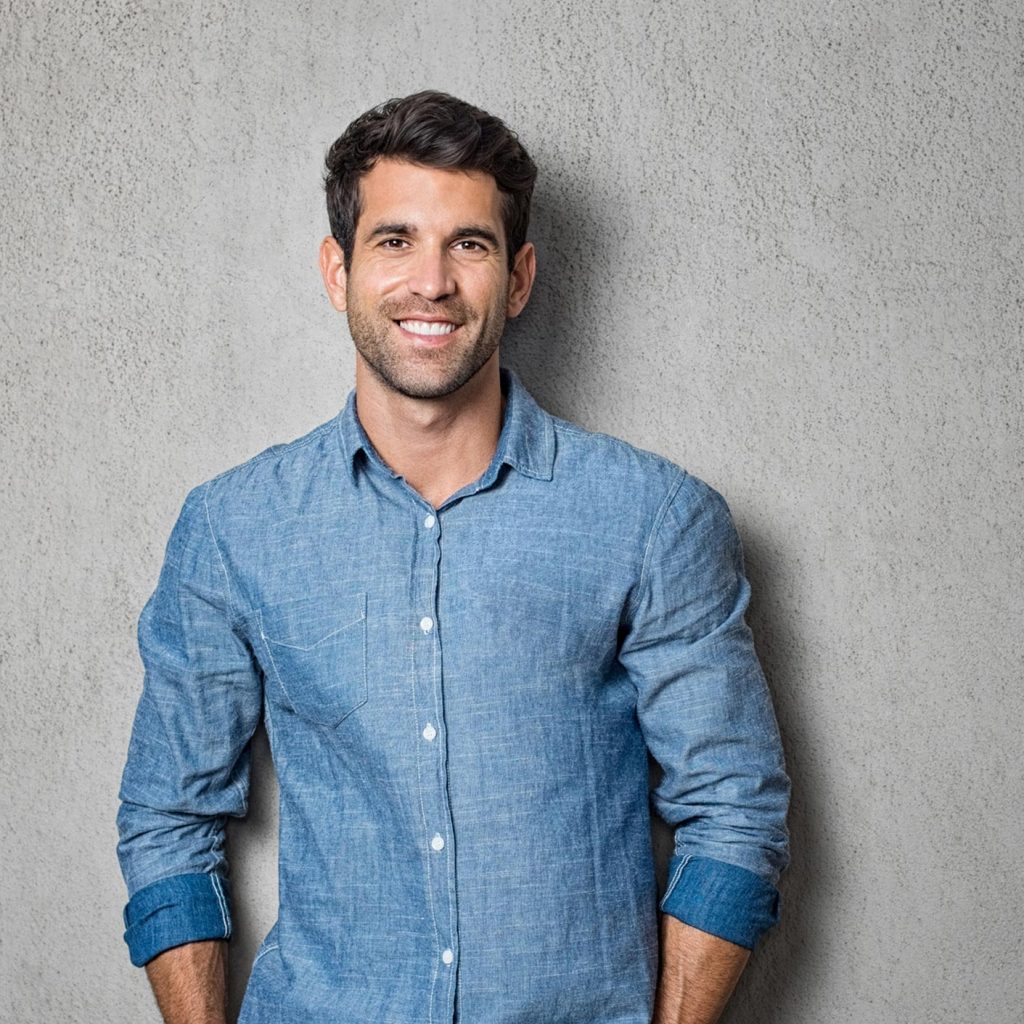
Also known as Rhinoplasty in San Diego, nose reshaping improves the appearance and proportion of your nose, enhancing facial harmony and self confidence. Surgery of the nose may also correct impaired breathing caused by structural abnormalities in the nose
While the shape of your nose is usually the result of heredity, the appearance may have been altered in an injury or during prior surgery. Nearly any problem can be improved with nose reshaping. Dr. Alexander and Dr. Kaplan have tremendous experience in rhinoplasty, and a reputation for providing excellent results.
For more information about our nose reshaping procedure, please contact us online or call us at 888-463-9532. We look forward to helping you look your best.
Contents
Understanding the San Diego Rhinoplasty Procedure
Surgery of the nose improves the appearance and proportion of your nose, enhancing facial harmony and self confidence. Combined with other surgeries, such as a facelift or soft tissue augmentation, a nose surgery can help change the way you look and feel about yourself.
Surgery of the nose may also correct impaired breathing caused by structural abnormalities in the nose.
Rhinoplasty can change:
- Nose size, in relation to the other facial structures
- Nose width, at the bridge and at the base
- Nose profile, with visible humps or depressions on the bridge
- Nasal tip, that is large or bulbous, drooping, or too upturned
- Nostrils that are large, wide or upturned
- Nasal asymmetry and deviation
Septoplasty can improve:
- A crooked septum
- Bony blockages in the nasal airways
- Large turbinate’s that obstruct breathing.
At Alexander Cosmetic Surgery, we perform Rhinoplasty in San Diego on a regular basis. The nose is one of the most prominent features of the face and can detract from other beautiful facial features. When the nose is placed in harmony, patients are very pleased and have an increase in self esteem.
Before You Decide…
The Consultation

To ensure the most natural looking results, it’s imperative for a surgeon to recommend the procedure which most appropriately matches the patient’s needs and to offer realistic expectations for post-surgery outcomes. When you meet with a surgeon, you should expect a full discussion of the surgically appropriate options for your face, which is uniquely yours.
A good surgeon goes through a series of examinations and observations that are individual and dependent upon your specific situation and goals, but also factor in the surgeon’s expertise, training and experience. Be wary of the “one-size-fits-all” approach. This is particularly important because as medicine has advanced, patients have more options available.
The success and safety of your procedure depends very much on your complete candidness during your consultation. You’ll be asked a number of questions about your health, desires and lifestyle.
Be prepared to discuss:
- Why you want the surgery, your expectations and desired outcome
- Medical conditions, drug allergies and medical treatments
- Use of current medications, vitamins, herbal supplements, alcohol, tobacco and drugs
- Previous surgeries
We may also:
- Examine and measure your face
- Take digital photographs for computer imaging
- Discuss your options and recommend a course of reshaping your nose
- Discuss likely outcomes of nose surgery and any risks or potential complications
- Discuss the anesthesia options available
Because every case is unique, the only way to accurately determine which procedure is best for you is to consult with Dr. Alexander and Dr. Kaplan. Computer imaging can be a very helpful communication tool for the doctor and patient to ensure that the verbalized desires of the patient are compatible with what Dr. Alexander and Dr. Kaplan think is possible surgically. Expectations can be evaluated to see if they are reasonable. Imaging is done to help communication. It is not a guarantee of results.
Questions to Ask
- Were you trained specifically in the field of plastic surgery?
- Do you have hospital privileges to perform this procedure?
- Is the office-based surgical facility accredited by a nationally or state-recognized accrediting agency?
- How many procedures of this type have you performed?
- Am I a good candidate for this procedure?
- What will be expected of me to get the best results?
- Where and how will you perform my procedure?
- What shape, size, surface texturing, incision site and placement site are recommended for me?
- How long of a recovery period can I expect, and what kind of help will I need during my recovery?
- What are the risks and complications associated with my procedure?
- How are complications handled?
- What are my options if I am dissatisfied with the outcome of my ear surgery?
- Do you have before-and-after photos I can look at for each procedure and what are reasonable results?
Who is a good candidate?
Nose reshaping is a highly individualized procedure and you should do it for yourself, not to fulfill someone else’s desires or to try to fit any sort of ideal image.
Surgery of the nose is a good option for you if:
- Your facial growth is complete (you aren’t still growing taller)
- You are physically healthy
- You don’t smoke
- You have realistic goals for the improvement of your appearance
What does it cost?
A quote will be provided to you after your consult with Dr. Alexander and Dr. Kaplan. Cost is always a consideration in elective surgery, but remember that the surgeon’s experience and your comfort with him or her are just as important as the final cost of the surgery. We offer patient financing plans, so be sure to ask.
Costs include:
- Surgeon’s fee
- Operating room and supplies
- Anesthesia fees
- Prescriptions for medication
- Post-surgery garments, and
- Medical tests
Most health insurance plans will not cover elective surgery, related complications or another surgery to revise the appearance of your nose. When nose surgery is performed to improve breathing function, this is considered reconstructive and may be covered by insurance. Pre-certification is often required for reimbursement or coverage. Be sure to consult with your insurance company in advance of any surgery.
To learn more about our partner in payment plans, please visit CareCredit.
The Rhinoplasty Procedure
Prior to surgery, we will have you:
- Take certain medications or adjust your current medications
- Avoid taking aspirin, anti-inflammatory drugs and herbal supplements as they can increase bleeding
- Stop smoking well in advance of surgery
During a preoperative appointment, usually 1-2 weeks before surgery, we will:
- Get lab testing or a medical evaluation
- Tell you what to do on the night before and morning of surgery
- Discuss the use of anesthesia during your procedure
- Explain post-operative care and follow-up, and what help you will need after the procedure
Anesthesia
Medications are administered for your comfort during the surgical procedure. The choices include intravenous sedation and general anesthesia. We will recommend the best choice for you based on your personality, your desires, and the complexity of your procedure.
How We Do It
Nose surgery to improve an obstructed airway requires careful evaluation of the nasal structure as it relates to airflow and breathing. Correction of a deviated septum, one of the most common causes of breathing impairment, is achieved by adjusting the nasal structure to produce better alignment.
Correction of Nasal Deformities Can Involve:
- Changing the tip of the nose
- Narrowing the base of the nose
- Making the nostrils smaller
- Removing a hump, or filling in a depression
- Narrowing the bridge of the nose
- Straightening the nose
- Setting the nose back closer to the face
We normally perform the procedure with the closed technique. This avoids an incision across the middle base of the nose, or columella. Sometimes this incision heals well, but sometimes it can indent and leave a notch. Also, the open technique, in our opinion, creates more long term swelling in the tip, hurting definition.
The closed technique is more technically challenging, especially for new surgeons or surgeon unfamiliar with the technique. However, surgeons who are comfortable with the closed technique believe that excellent results can be seen sooner, since there is less trauma to the nose.
The procedure typically takes about 60-120 minutes depending on the individual face and certain surgical variables.
There are five basic steps to nose reshaping surgery:
Step 1 – The Incision
Incisions are made inside the nose, where they are well hidden. Through these incisions, the soft tissues that cover the nose are gently raised, allowing access to reshape the structure of the nose.
Step 2 – Refining The Tip
The tip cartilages are exposed and carefully reduced, creating a more refined nasal tip.
Step 3 – Reshaping The Bridge
The hump is removed from the bridge of the nose. Fine instruments are used to smooth the bridge. On the other hand, if there is a depression in the bridge, cartilage may be added to build it up.
Step 4 – Narrowing The Bridge
The bones are divided, allowing the bridge to be narrowed, and if necessary, straightened.
Step 5 – Closing the Incision
Once the underlying structure of the nose is sculpted to the desired shape, nasal skin and tissue is redraped and incisions are closed.
Optional Step – Alar Resection
If the base of the nose is too wide, a wedge can be removed from the base, narrowing the nose.
Optional Step – Correcting a Deviated Septum
If the septum is deviated, it is now straightened and the projections inside the nose are reduced to improve breathing.
Informed Consent
Pain from the ear surgery is usually minimal. Pain pills are provided, but are usually not required after a couple of days. Significant pain is extremely rare and may be the sign of a serious complication, so your physician should be notified.
The decision to have ear surgery is extremely personal and you’ll have to decide if the benefits will achieve your goals and if the risks and potential complications are acceptable. Your plastic surgeon and/or staff will explain in detail the risks associated with surgery.
We will explain in detail the risks associated with surgery. You will be asked to sign consent forms to ensure that you fully understand the procedure you will undergo and any risks and potential complications.
The risks include:
- Nose asymmetry
- Rupture of small surface vessels of the nose
- Infection
- Poor wound healing
- Bleeding (hematoma)
- Change in skin sensation (numbness)
- Nasal airway alterations may occur after a rhinoplasty or septoplasty that may interfere with normal passage of air through the nose
- Nasal septal perforation (a hole in the nasal septum) may develop but is rare; this is usually associated with septal surgery only
- Pain, which may persist
- Unfavorable scarring
- Skin contour irregularities
- Skin discoloration and swelling
- Possibility of revisional surgery
- Anesthesia risks
Important Terms to Know
Anesthesia—General: The patient is asleep, requiring that the airway be protected, either by a standard breathing tube, or by a laryngeal mask (LMA), an inflatable mask that goes in the back of the throat but doesn’t go down the trachea. Through the airway, an anesthesiologist gives gases to put the patient asleep. Drugs may also be given through the IV.
Anesthesia—Local: The surgical area is numbed up with an injection, but the patient is awake. Sometimes a patient will be given an oral medication, like valium, to help with relaxation.
Anesthesia— Sedation (Twilight): The patient is made sleepy with medications given through an IV. The level of sedation can be adjusted, from barely sleepy to very sleepy. Sometimes sedation is given by the surgeon, but most of the time it is administered by an M.D. anesthesiologist
Cartilage: Connective tissue that forms the structure of the nose.
Columella: The narrow strip of tissue that separates the nostrils.
Deviated Septum: Cartilage that separates the nostrils is misaligned, which may cause partial nasal airway obstruction.
Hematoma: Blood pooling beneath the skin.
Rhinoplasty: Surgery to reshape the nose.
Recovery
Be sure to arrange for someone to drive you to and from surgery and to stay with you for at least the first night following surgery. If you experience shortness of breath, chest pains, or unusual heart beats, call Dr. Alexander and Dr. Kaplan immediately.
You will be given specific instructions that includes:
- How to care for the surgical site
- Medications to apply or take orally to aid healing and reduce the potential for infection
- Specific concerns to look for at the surgical site or in overall health
- When to return to the office
The Specifics
A splint will be placed to support the nose and minimize swelling for approximately one week. Anterior packs are placed in each nostril and are removed on the next day. This doesn’t hurt. If the septum has been done, deeper packs are placed and left 2-4 days. It is uncomfortable to remove these packs but more weird than painful.
The nose can drip blood and mucous until the packs are removed. You should avoid blowing your nose for two weeks after the surgery. The splint is removed at one week. At this time you will get a good look at how the nose is likely to look. By the next day, the nose will swell a little, but this will come down over the next several weeks. While initial swelling subsides within a few weeks, it may take up to a year for your new nasal contour to fully refine.
During this time you may notice gradual changes in the appearance of your nose as it refines to a more permanent outcome. Swelling may come and go and worsen in the morning during the first year following your nose surgery.
Following your doctor’s instructions regarding medications and other post-operative measures is key to a quick recovery. Herbal medications are available to reduce swelling, bruising, and to speed your recovery.
It is important that the nose is not subjected to excessive force, abrasion, or motion during the time of healing. Your doctor will give you specific instructions on how to care for yourself.
Results
It may take several months for swelling to fully dissipate and up to a year—and sometimes longer—for the outcome of the surgery to fully refine. Although the results of nose surgery are usually permanent, cartilage may continue to reshape and move tissue that may change the outcome over time.
The practice of medicine and surgery is not an exact science. Although good results are expected, there is no guarantee. Small revisions are occasionally necessary. In general our patients are very pleased with their nose reshaping. Our goal is to provide a result that is pleasing, balanced, and in proportion with your other facial features and your ethnicity. Others should not be able to tell you have had surgery.

